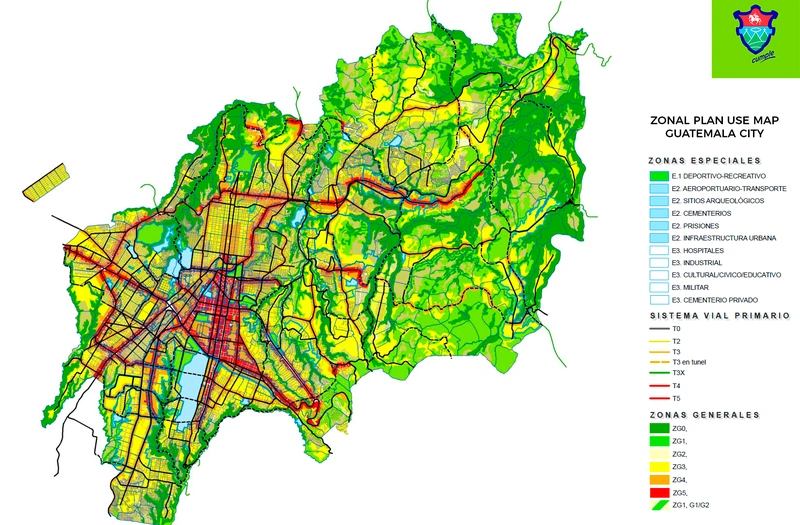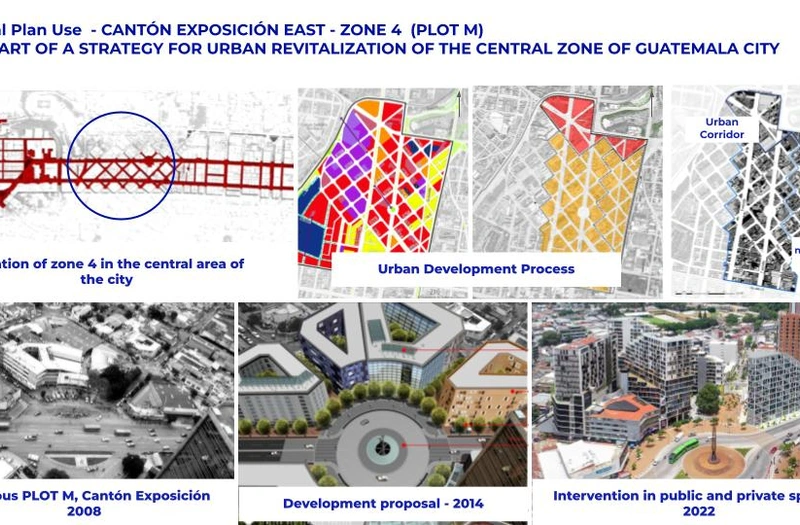Guatemala City is conformed by 40% of developed areas and 40% of a natural green network that surrounds the city and the one we have called “The Great Green District”. The city has identified another 20% of the territory as an area with a big opportunity of development and transformation under a new model of urban planning based on the concept of “the compact city”.
Guatemala City’s Department of Urban Planning has been working on its strategic planning for the next 35 years, creating an ambitious plan that has identified six territories with a potential of urban renewal. These territories are The Opportunity Districts and make up for the remaining 20% of the territory with the potential of urban development and transformation. The city is promoting this 20% of the territory as the new sustainable districts that seek to improve the urban conditions in the city.
We have identified The Opportunity Districts according to their own qualities based on their strategic location and immediate surroundings. Two of them are located to the north of the city and have the opportunity for development and expansion: ViaNorte and Nu6 Districts. Another two Districts at the center of the city promote an urban renewal but subject to specific regulations: Central and Tivoli District. And two Districts to the south linked to two new massive public transportation systems: ViaDoce and Siete 11 District; all of the six Districts will be connected to The Great Green District.
The main concept of The Opportunity Districts is based on three pillars: proximity, innovation and maximum occupancy, these three concepts are linked to the well-use and management of resources making these territories sustainable Districts. Each District will undergo transformations at a neighborhood-scale that will improve its public space, transportation, housing, facilities and historic landmarks.
In order to promote neighborhood-based revitalizations, the city needs to address new modes of transportation. By implementing a 9km cable car system and a 20.5km light train the city aims to mobilize people in a short period of time, from workplaces and leisure facilities. Simultaneously promoting a mixed-use development along both transportation systems.
Guatemala City has a population of 1.8 million and an additional 1.7 million of people that visit from the commuter towns to reach their workplaces. This new urban plan for Guatemala City seeks to reduce the urban sprawl by creating a polycentric city model. Even though this concept is not new, few Latin-Americans cities pursue this polycentric and multi-nodal model.
The Opportunity Districts have already begun their impact in the City. Important alliances have been made with private developers and international cooperation in search of funding for the remarkable projects we have visualized for each District.
Also, a communication strategy has been implemented with exhibitions and workshops where we involve the public in decision making by governments. We are executing pilots while testing and inviting neighbors to participate and contribute with their proposals.
The Opportunity Districts will create a city suitable for the present and the future.
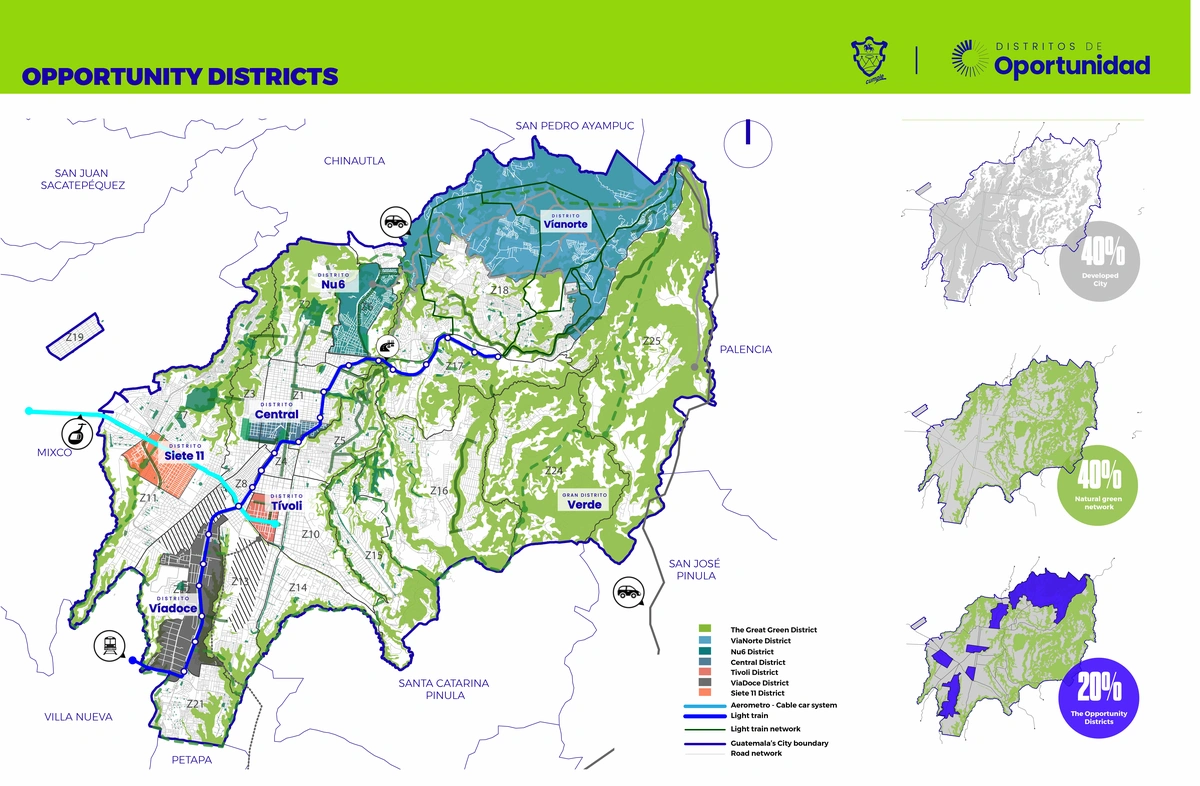
Guatemala has an extension of 228.7km2 and within this the Opportunity Districts make up 41.20km2 of the territory with a potential for urban development.
Guatemala City map showing the proposal of The Opportunity Districts linked to two new massive public transportation systems. The image shows the percentage that conforms the city: 40% of developed areas surrounded by a 40% of a natural green network, “The Great Green District” and the six territories identified as the Opportunity Districts.
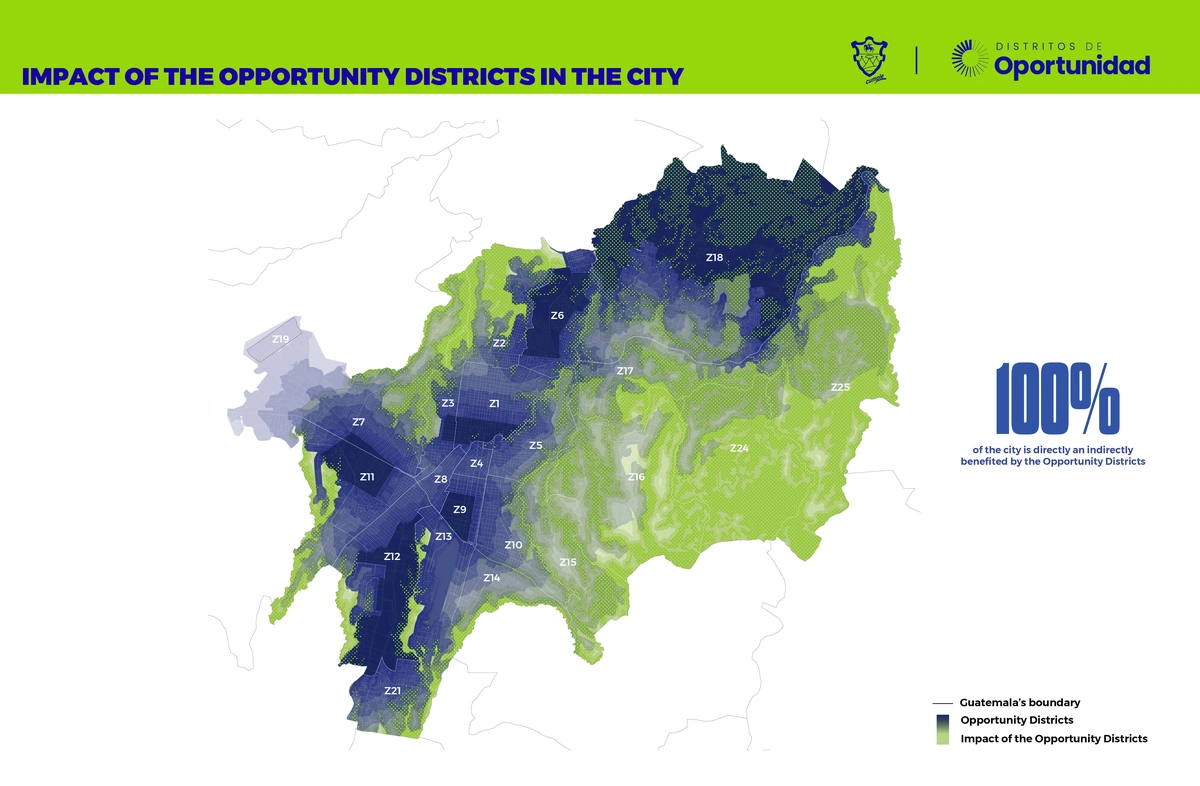
The impact of The Opportunity Districts can be measured at three different scales: first, each District will have an impact on the zone (area) in which it is located, leading to the execution of the remarkable projects for each District in a short term. Second, they will impact the immediate surroundings, as they will set the conditions for urban renewal of nearby zones and towns. And last, the Opportunity Districts will impact the entire city since they are conceived as a “city-scale project”.
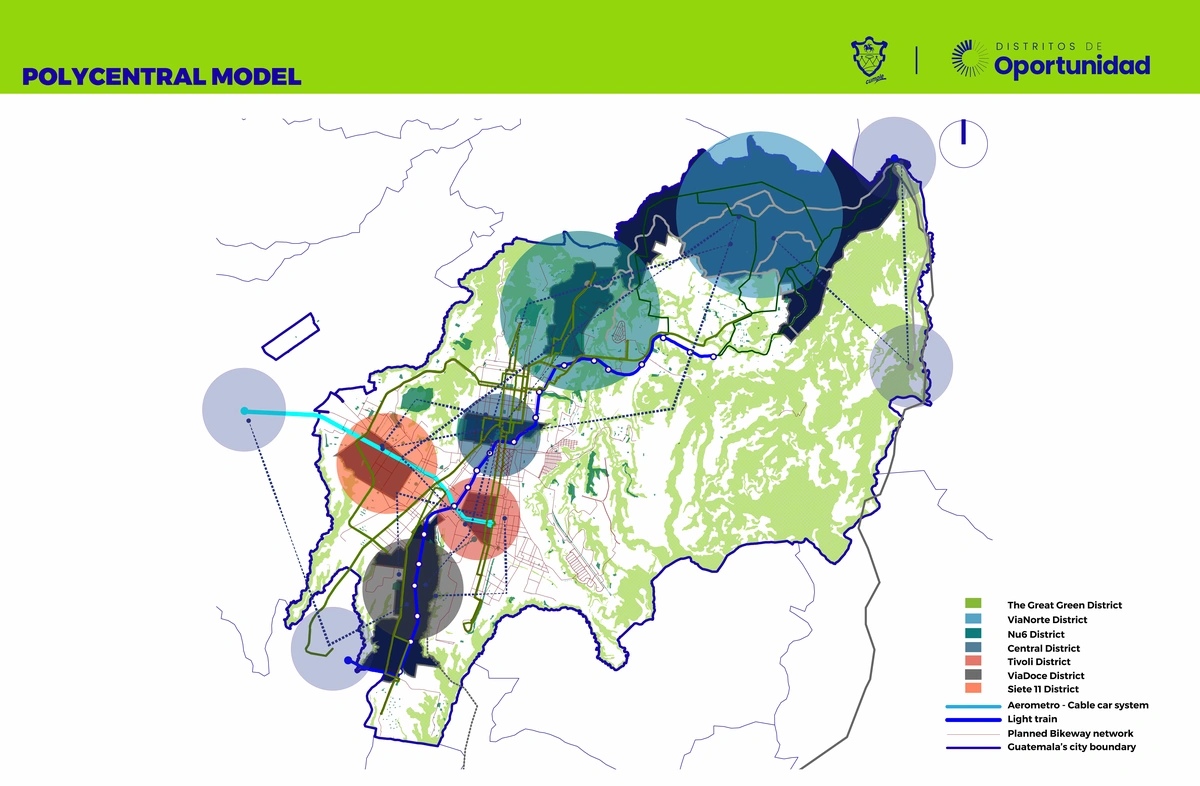
This polycentral model seeks to bring people closer to their jobs, leisure and daily services; The Opportunity Districts are proposed as centralities linked through a proposed mass transportation systems and infrastructure.
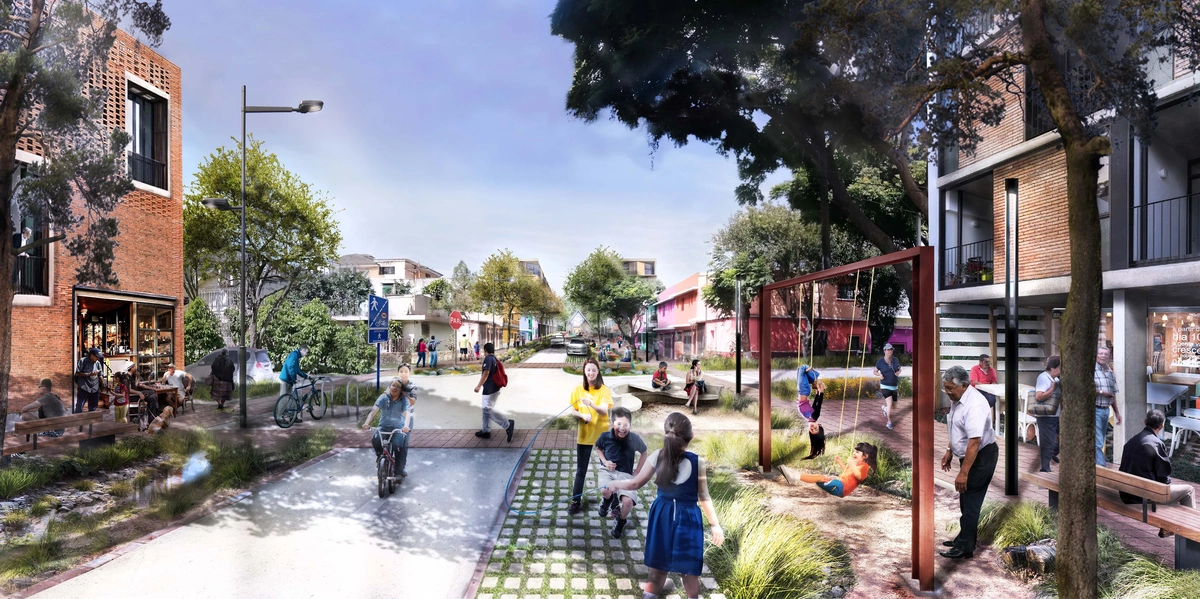
Vision of neighborhood transformations within the Opportunity Districts, creating mixed-use neighborhoods and improving public spaces to bring people together in real communities.
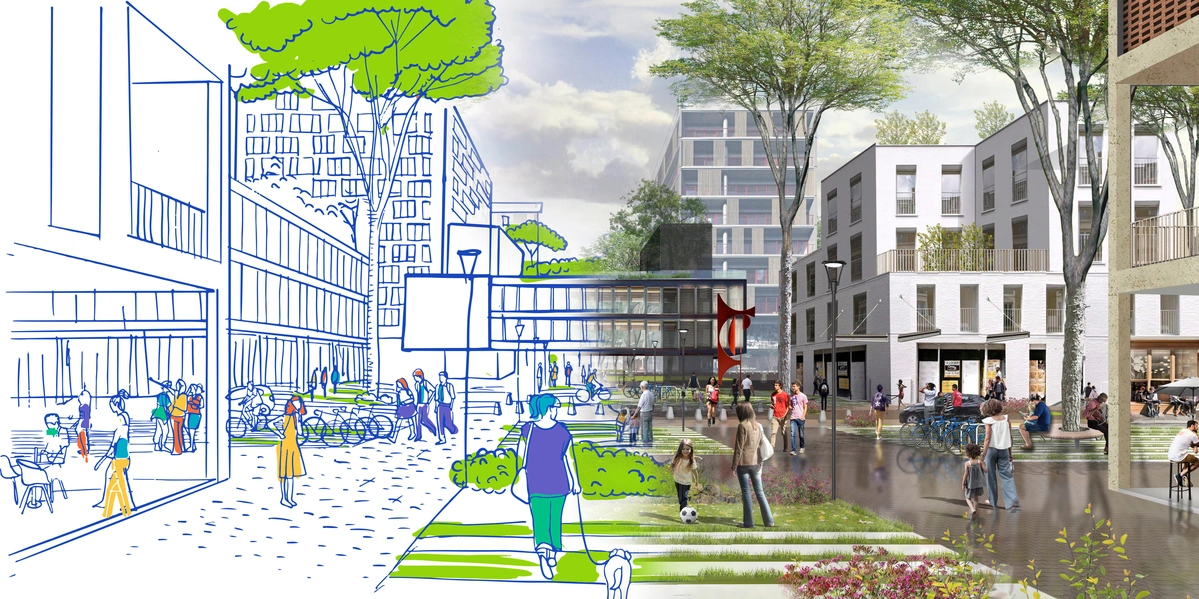
Visualization of the transformation of the territories.
The objective of the Guatemala City’s Department of Urban Planning (DUP) is to promote the adequate and efficient use of the territory in the capital city, through the generation of different mechanisms and regulatory instruments for land management, implementation of the land use and formulation of strategic urban plans, based on the compact city model that improves the quality of life of residents and their families. Since its establishment in 2009 DUP has evolved and grown, assuming a leadership in the city management from the vision of urban planning for action in this contect positively addresses the challenges of equitable and sustainable development with solutions aimed at a strategic response to the challenges of a city that is a center of attraction at the national level by the concentration of economic functions, services and facilities.
